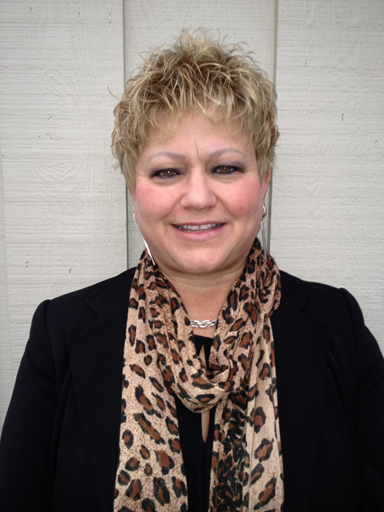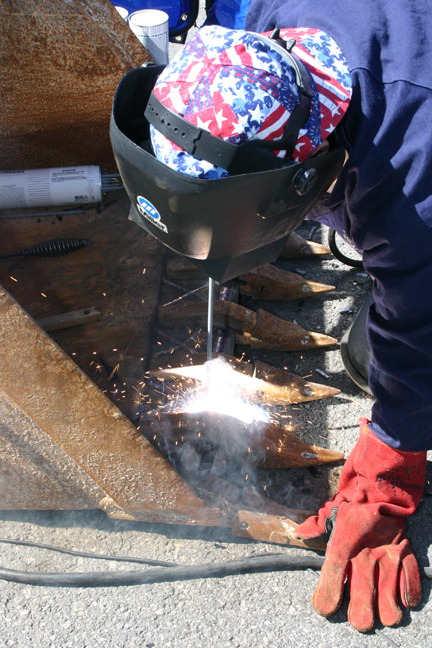Jul 27, 2012
Building a Career in Welding: From Student to Teacher
TROY, Ohio. July 26, 2012 — For some people, choosing a career in welding happens without question. Many in the industry say they found themselves intrigued by the technology after trying it as a hobby or that they had family members in the industry and so grew up around it. Others may have been encouraged to pursue the career by a teacher after participating in a welding skills class in high school. But for some, a career in welding happens by circumstance. Chris Monroe says that was the case for her.
Finding herself laid off from a job with a soil conservation company at the age of 18, Monroe learned about a state training program in Ohio designed to support schooling in the trades. Knowing that a traditional college education wasn’t the right path for her, she decided to enroll in the welding certification program at the Hobart Institute of Welding in Troy, Ohio, and soon realized she had found a niche for herself.
“I recognized early on that this was a good trade for me and that there would be jobs available when I finished school,” Monroe explains. “So I took advantage of the opportunity, even though, honestly, I couldn’t have foreseen at the time exactly where the career would take me.”
That’s not surprising. Over the course of a 32-year welding career, Monroe has found herself in positions ranging from research and development to weld chemistry analysis and welding training, and has been able to travel extensively in and around the United States along the way. She regularly shares her passion for welding with others in hopes of encouraging those in the industry to expand their knowledge and newcomers to consider the possibilities for their careers.
After completing her nine-month combination structural steel and pipe welding program at the Hobart Institute of Welding, Monroe was given the opportunity to join Hobart Brothers Company as a certified welder in the company’s quality control department. She worked there for 10 years, focusing on tasks such as welding test plates and assessing their chemistry to be certain that the filler metal formulations in the manufacturing process were accurate. This testing spanned the gamut of filler metals, from stick electrodes, solid wires and tubular wires, including flux-cored products. In addition, Monroe said she would work with local companies — from plumbers welding copper pipe to King’s Island employees welding roller coaster components — to test that their welds met the proper codes and to certify them for use.
While in this position, Monroe also used the opportunity to expand her knowledge of welding, becoming certified in non-destructive and x-ray testing, as well as destructive testing. The latter allowed her to oversee activities such as the tensile strength and impact testing of filler metals, and also poised her for her next two positions: research and development, and applications engineering.
In research and development, Monroe says she became involved in product formulation and certification, and worked

and CWI/CWE at Hobart Brothers
Company.
with welding engineers to help develop filler metals for specific customers and applications. The goal in the position was to help customers determine the chemical and mechanical needs of their particular application, as well as how to meet those needs given the company’s specific welding parameters, joint configurations and existing welding equipment. She pursued the job for seven years until an opening arose in the company’s applications engineering lab — an opportunity she had been eagerly awaiting.
“It was an exciting chance for me, because it was customer-oriented,” she explains. “I knew that I’d be able to work
withpeople, analyze the problems they were having in their applications and try to help them improve their welding operations.”
The position also gave Monroe the opportunity to travel, as much of the problem solving and welder training occurred on location. She said over the years she was able to offer support on cross-country pipeline applications, the construction of Navy battleships, and in rail-car manufacturing applications. She says one of her favorite customer visits was working on the line in Erie, Pa., with welders who were fabricating train locomotives.
She explains that it hasn’t always easy being a female instructor visiting predominantly male jobsites like these, but she quickly establishes her credibility at each one.
“I often joked with the guys that I’d try to ‘hold my own’ on the jobsite I was visiting,” Monroe says. “By the time I was done with my welding demonstrations, they’d see there was no question I that I could. I like that because I get satisfaction in teaching someone and having that person understand it — male or female.”
During her time working in the applications engineering lab, Monroe also became a certified welding inspector (CWI) and a certified welding educator (CWE) through the American Welding Society (AWS), the latter of which serves her particularly well in her current position.
Today, Monroe oversees the training center at Hobart Brothers, working primarily with distributors to educate them on filler metals, AWS classifications, welding techniques, materials and more. Courses she provides cover topics ranging from stainless steel welding to hard surfacing and metal-cored wire training, and are designed to help distributors gain the knowledge they need to support their customers’ welding operations. Monroe set up the classroom and lab at the training center in 2005 and developed all the training materials for each of the courses. In this position, she is fortunately still able to pursue the favorite part of her career, too: working hands-on with customers. She still makes visits on location to analyze their welding operations and provide training to address any problems they may have.
Monroe says that even though she has decided to stay with the same company for the duration of her welding career, her experience in the industry has shown her that similar opportunities exist throughout the welding equipment manufacturing sector and also within various fabricating and manufacturing facilities. She encourages new welders who are interested in research or applications to look beyond “the hood” for their options.

and helping them problem solve as the highlights of her
career.
She also offers some advice for those of are considering a welding career, explaining that, first and foremost, “Hard work and paying your dues are all part of learning and growing in a welding career. Pay attention to the details and take advantage of every chance to learn.”
And she adds, “There’s an opportunity in this industry to have a career for life. You can work on the manufacturing floor or in the field as a welder, or as an ironworker building a stadium. You can become an engineer and develop welding products or travel around the country as a Certified Weld Inspector. There are just so many avenues. Don’t feel like you are limited to one thing for your entire career.”



